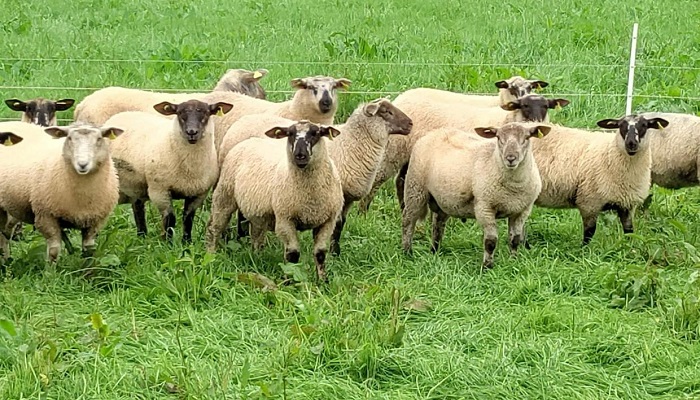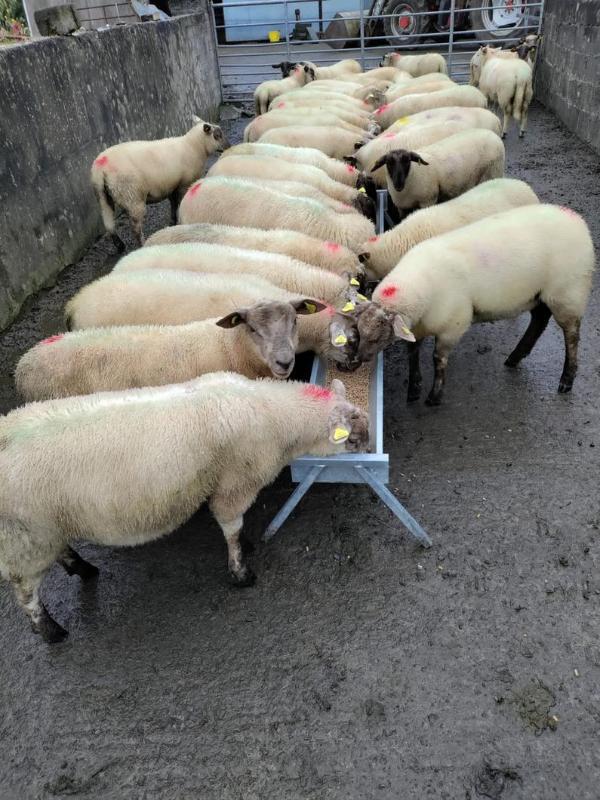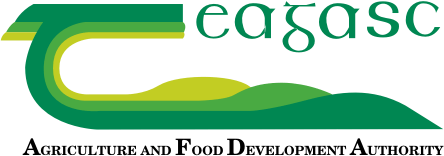02 August 2022
BETTER Sheep Farming with Francis Gonely

Francis Gonley and his family run an all-sheep farm on the outskirts of Sligo town. Since Francis joined the Teagasc BETTER farm programme in 2017, the lowland flock has greatly improved in terms of output per ewe. Damian Costello, Teagasc Sheep Specialist outlines these improvements here
Francis Gonley and his family run an all-sheep farm on the outskirts of Sligo town. The home farm carries a closed lowland ewe flock of 110 ewes, including replacements which are lambed down for the first time at one year old.
The outfarm, 8km away on Benbulben near Glencar Lake and waterfall, is home to a 200-ewe Scottish Blackface hill flock and comprises reasonable quality green ground adjoining a large area of commonage.
Performance at weaning
The weaning of lambs from mature lowland ewes took place on July 1, with all lambs weighed at 14 weeks.
Weaning is a great time to take stock of flock performance — lambs reared per ewe to the ram is the number one driver of flock profitability.
Since Francis joined the Teagasc BETTER farm programme in 2017, the lowland flock has greatly improved in terms of output per ewe thanks to the introduction of prolific Belclare genetics and a focus on having ewes in optimum body condition at mating.
For the mature ewe flock Francis has this year weaned an impressive 156 lambs from 88 ewes joined with the ram — an output of 1.77/mature ewe to the ram.
Lambs produced by mature ewes have performed well, with gain from birth to weaning at 14 weeks averaging 353g/day, 279g/day and 279g/day for lambs born as singles, twins and triplets respectively.
lambs were reared as triplets, with surplus lambs either cross-fostered or artificially reared.
Average weight of lambs at weaning is not always a great indicator of lamb performance.
It is much more informative to look at the percentage of lambs falling into different weight categories at weaning (see table below) — and here, just 9pc were under 25kg in this case.
Table: Weaning weights of lowland lambs from mature ewes
| Range | Percentage (%) |
|---|---|
| < 25 kg | 9 |
| 25 – 30 kg | 19 |
| 30 – 35 kg | 30 |
| > 35 kg | 42 |
Given the strong prices available for cull ewes, Francis will use his records to identify and cull the dams of poorer-performing lambs at weaning and keep a few extra ewe lamb replacements if necessary.
Post-weaning management

After weaning, a finishing group of lambs over 38kg are being offered good-quality grass supplemented with 300 to 500g/head/day concentrates.
Potential ewe lamb replacements were also selected and marked at weaning and are being grazed with the lighter lamb group.
Lambs intended for slaughter will be drafted to join the finishing group once they reach the 38-40kg live weight from a grass-only diet.
Weaned lambs are being grazed on good-quality grass, allowing them to graze down to 5-6cm before moving them to fresh pasture.
The ewes are a follower group grazing paddocks out to 4cm. Factory-fit lambs will be drafted fortnightly.
Hill flock issues
The lambs are due to be weaned from hill ewes around now and all will be weighed at weaning.
The lambs will then be taken to the home farm to get them settled post-weaning as well as getting them to help to deal with surplus grass covers.
Once settled ewe lambs being kept as replacements will return to the green ground on the hill farm.
The plan is to also finish a good proportion of the hill lambs on the home farm, with the remainder being sold as stores at the local mart.
The ewe flock will return to the hill for now, with any thin ewes to be kept on green ground with the aim of regaining body condition before the breeding season.
Signpost demonstration farm
As a participant in the Signpost programme, all straight nitrogen applications are now in the form of protected urea.
Francis plans to spread 20 units/ac on the home farm in August to build autumn grass covers.
Further Information:
You can read more about Francis Gonley‘s farm here | Read about the BETTER Farm Sheep Programme and about the Signpost Programme
The Teagasc Sheep Specialists and advisors issue an article on a topic of interest to sheep farmers on Tuesdays here on Teagasc Daily. Find more on Teagasc Sheep here
